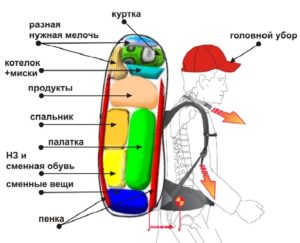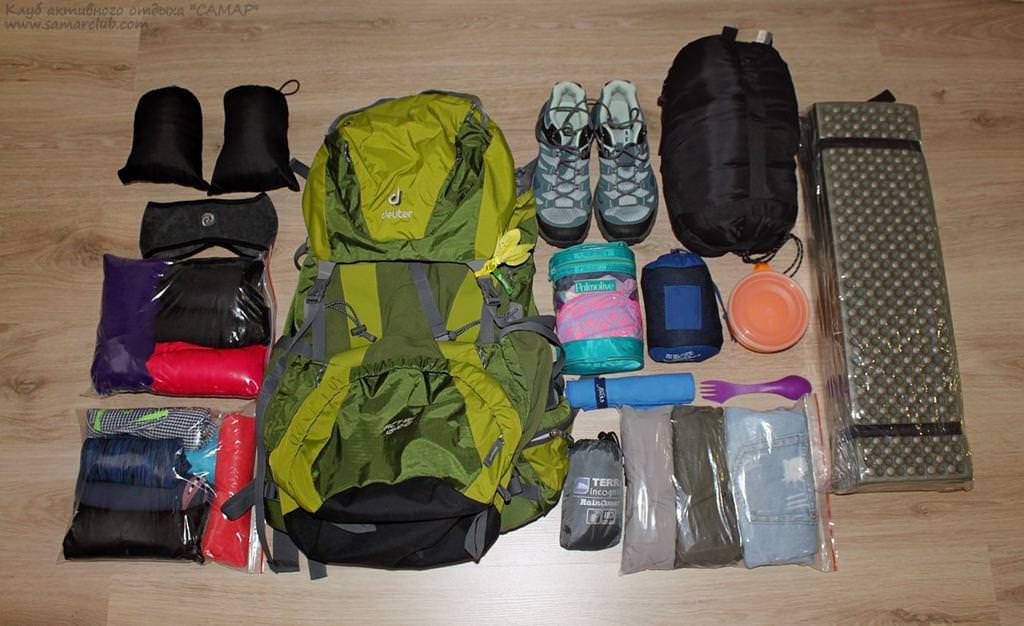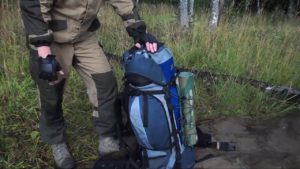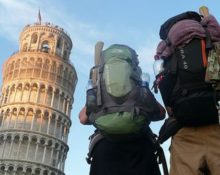Getting ready for a hike and putting all your things in a backpack is not as simple as it seems at first glance. You need to take exactly the things you need. There shouldn’t be any extra items, but the lack of something, at best, will cause a lot of inconvenience. What secrets and tricks exist when filling a backpack and what to take so that there is enough, but not too heavy to carry? Read on for tips from experienced travelers.
Rules for packing a backpack for a hike
 The training does not begin on the day of release or the evening before, because everything needs to be carefully verified. It will take at least a few days.
The training does not begin on the day of release or the evening before, because everything needs to be carefully verified. It will take at least a few days.
First, the tourist must think about what things he might need. The time of year, the terrain for the hike, duration, and weather conditions are taken into account. Then It’s worth writing down on a separate sheet point by point everything you need that you are going to take. Set aside a place for packing and put things and items for the trip there, crossing them off the list at the same time.Perhaps some items will be added over time, and some things you will decide to refuse.
Once everything is put together, divide things into several categories:
- lungs,
- average weight,
- heavy.
This is necessary to distribute them inside the backpack with the greatest ease of movement. For a forest hike, put a medium weight at the bottom, then a heavy one, and only light weight at the top.. This placement is convenient because the load does not pull to the ground, does not rock the tourist when walking, but, lying against the back, coincides with the center of gravity, and allows you to move as comfortably as possible.
When planning to conquer mountains, your backpack should be laid out differently: from the heaviest load at the bottom to the lightest at the top. This is explained by the fact that the torso of a tourist climbing up involuntarily bends forward. Accordingly, the main weight in the center of the back will swing it to the sides.
Important! When packing your backpack, remember that there are weight restrictions for hiking: do not load it with more than a third of your actual kilograms.
You need to arrange your equipment in such a way that the shape of the backpack becomes correct, and it does not pull down or to the side, and nothing inside knocks or digs into your back. At the same time, you should be able to quickly remove the necessary item without tearing through everything placed in the bag.

Necessary things for a hike
The list of clothing, food and equipment depends on personal preferences and the characteristics of the trip (time of year, duration, terrain). But the main things can be represented by the following list:
 The main thing on a hike is a tent. Decide with your comrades about who will carry it and who will get the accessories;
The main thing on a hike is a tent. Decide with your comrades about who will carry it and who will get the accessories;- No less important is a sleeping bag, which is chosen according to height and temperature;
- foam (mat for sleeping) - a light and convenient accessory that will not allow you to freeze at night in any weather;
- a raincoat designed for a tourist with a large backpack;
- a pair of shoes for changing at a rest stop. It will allow your tired feet to rest;
- when hiking you need spare clothes - 1-2 pairs of pants, 2-3 pairs of socks;
- you can’t do without warm clothes – Bring a jacket or sweater and be sure to wear woolen socks;
- if the hike is long, you will need a change of clothes - 2-3 pairs of T-shirts and underwear;
- in summer, light trousers (shorts) and a swimsuit will be useful;
- do not travel without utensils - take a mug, spoon, pot, kettle with you;
- do not forget about personal hygiene products – soap, toothbrush and toothpaste;
- necessary little things: matches, compass, flashlight, bandages, mosquito and tick repellent;
- first aid kit with essential medicines;
- a set of food and canned goods;
- money and documents.
Important! When packing things, place them in separate bags. This will make it easier to find and remove them, as well as preserve them and provide additional protection from moisture.
Step-by-step packing of a backpacker's backpack
 First, we place bulky, lightweight items: usually a sleeping bag;
First, we place bulky, lightweight items: usually a sleeping bag;- after that, lay out the backpack on the table and lay down a soft layer that will be in contact with your back. It should be evenly distributed and of sufficient thickness so as not to put pressure on the spine. This could be foam (a travel mat) or a change of clothes that are not needed throughout the day;
- heavy things are placed on the created soft layer: a supply of food and canned food;
- the remaining space contains dishes, spare shoes, and personal hygiene products;
- the very top and outer pockets are filled with items that are often needed: mosquito and tick repellent, matches, first aid kit, map, flashlight, raincoat. The camera should always be at hand, it is placed either here or on the chest or belt;
- Place a bottle or flask of water in the side outer pocket. You can freshen up often, but untying and unfastening everything every time is inconvenient and time-wasting.
Important! Before filling your backpack, insert a regular trash bag inside. It will create an additional protective barrier to moisture from the outside.
The natural question is where to place the tent. There is no consensus here: some advocate that the tent and some things can be attached outside, others talk about the inconvenience of moving with equipment attached and dangling, which makes it difficult to move in the forest between bushes and trees. Having chosen the second option, place it in the center of the backpack, along with heavy items.


 The main thing on a hike is a tent. Decide with your comrades about who will carry it and who will get the accessories;
The main thing on a hike is a tent. Decide with your comrades about who will carry it and who will get the accessories; First, we place bulky, lightweight items: usually a sleeping bag;
First, we place bulky, lightweight items: usually a sleeping bag; 0
0





